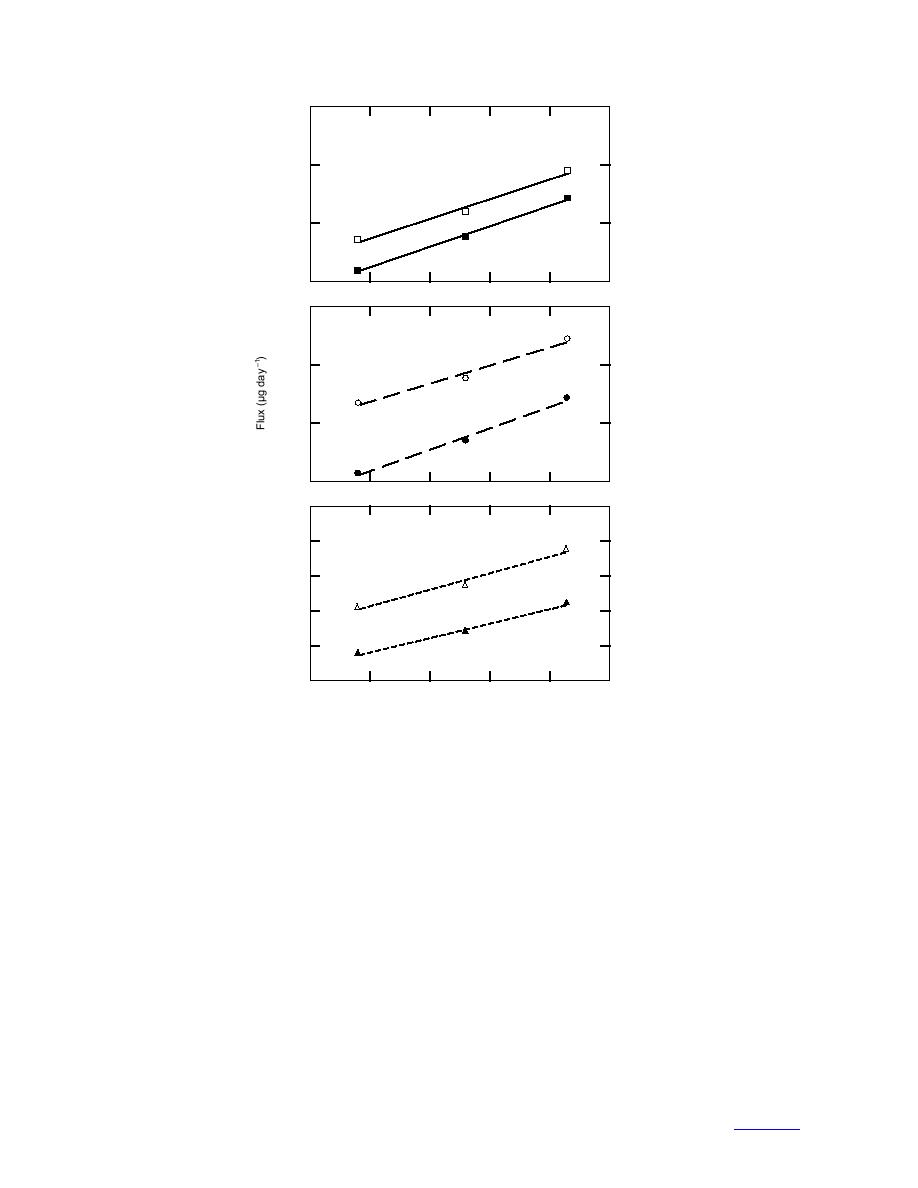
101
DNT, Open
100
y = 0.0246 e 0.159x
(R = 0.998)
a. DNT.
101
DNT, Sealed
y = 0.00740 e 0.166x
(R = 0.999)
102
101
DNB, Open
y = 0.113 e 0.146x
100
(R = 0.996)
b. DNB.
101
DNB, Sealed
y = 0.00653 e 0.171x
(R = 0.999)
102
101
100
TNT, Open
y = 0.00337 e0.206x
10
(R = 0.998)
c. TNT.
102
TNT, Sealed
3
y = 0.000228 e0.178x
10
(R = 0.999)
104
0
5
10
15
20
25
Temperature (C)
Figure 2. Flux of ERC from PMA2 mines.
Fluxes in water--why are they different?
We measured flux at 21.5C from one each of the
Cragin, in prep.).
PMA2, PPM2, and VS-50 AP mines that were sub-
Conversely, when a mine is submerged in water, the
merged in water. The experimental emission vs. time
concentration gradient driving mass transport is much
curves are shown in Figures 35. In all instances emis-
higher owing to a much smaller plastic/water partition
sion of vapors was more rapid in the beginning and
coefficient (Leggett and Cragin, in prep.), and vapors
tended toward a constant rate as the experiments pro-
are rapidly leached out of the casing until a new steady-
gressed. While the reason for this pattern is uncertain,
state is reached. This steady-state flux is controlled by
it is probably related to initial conditions of the mines.
factors internal or intrinsic to the casing, i.e., the solu-
A new mine case becomes saturated with source vapors
bility and diffusion coefficient characteristic of the
as they permeate through the case from inside. After a
materialcontaminant pair or the rate of transfer of con-
period of time, during which mines are typically boxed
taminant from the source to the case, whichever is smaller.
and stored in bunkers, vapors break through and can be
This explains the relatively steep rise and fall-off of flux
carried away by diffusion and convection. However, a
observed when the mines were first submerged in water.
high plastic/vapor partition coefficient results in a rela-
A reason can now be given for the observed func-
tively small concentration gradient to drive mass trans-
tional dependence of ERC fluxes on temperature. If the
port across the boundary layer, and mass transport is
fluxes are under mass transport control, as suggested,
6



 Previous Page
Previous Page
